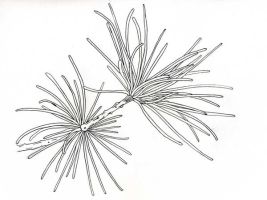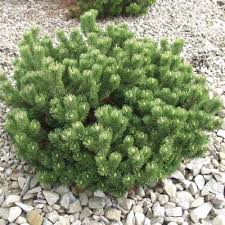Mahonia nervosa
“Dull oregon grape”
BERBERIDACEAE
Evergreen Shrub
Zone: 6-9
Native habitat: Pacific Northwest into California
Conditions
![9703732 Oregon Grape blossoms & foliage [Berberis nervosa]. Bellingham, L Padden, WA. © Mark Turner](https://westcoastislandblooms.wordpress.com/wp-content/uploads/2015/11/mahns.jpg?w=198&h=300)
Soil: any, prefers slightly acidic, rich soil high in organic matter
Moisture: well-drained, even moisture, drought tolerant
Light: full sun to full shade
Exposure: general
Plant size (h x w): 2′-4′ x 2′-4′
Other: tough, can take dry shade, will need more moisture if grown in the sun
(if grown in the sun without adaquet water colour can be wine red)
Aesthetic
Shape/stem: oval, multi-stemmed, orange bark in center (like the rest of the Berberis family), bark green when young, brown to grey with age; spreading by suckers to from loose ground cover
Leaf: Compound leaves, lustrous emerald green, glossy but duller than tall Oregon grape, 9-19 leaflets; each leaflet is strongly toothed,
Flower: panicles of canary flowers, dense above foliage
Bloom: spring
Other: Fruit, waxy blue steel berries, 1/4″, (mid to late summer); spreads by stolons to form loose ground cover

Treatment (how to…)
Plant: sow seeds in fall 1/4″ deep,
Maintain: no maintenance, can prune down to a node as needed, water after
Propagate: seed: collect August to September (30-50% germination), stratification (cold- 90 days), cutting: soft wood or root (root hormone, 2:1 sand to vermiculite)
Uses
Landscape: native garden, chorus plant, form to a garden in the winter, ground cover, woodland margin, wildlife garden, erosion control
Companion planting: would look great as a groundcover for Red stemmed dogwoods, Corylopsis pauciflora, Betula albosinensis var. septentrionalis and all witchhazels.
Medicinal: roots, berries, leaves
antimicrobial, hepatic, bitter, cooling > act on infection and liver
Internal (tea, tincture): heal liver stagnation, cool heat in digestion, mouth infection, eye  infection, UTI, sore throat, acne, etc.
infection, UTI, sore throat, acne, etc.
External (oil, sav): Inflammation in skin, eczema, psoriasis
Other:
Stem and root: yellow dye
Berries: edible, sour, tart, used to make jelly, sweeten with other berries in a pie, ferment into wine, purple dye
Berries attract wild birds; attracts the amara hummingbird
Vulnerabilities
Pests and disease: rust, scale, white fly (more stressed it is more susceptible will be)
Deer resistant: yes
Other animals: rabbit resistant, birds eat berries, flowers attract pollinators
Interest
Local info,: native, very common in Victoria, often found in the understory of Douglas-fir forests
Pot size (to purchase): 1-2 gallon
Nature: tough native; Suckering spreading shrub forms a loose groundcover
Identification (key features): broken bark exposes orange inner bark
number and height of stems, length and ; very similar to M. aquifolium , which is taller more glossy leaves and less leaflets per leaf; Also similar is creeping Oregon grape (M. repens). Interesting facts: Mahonia is named after the botanist who identified it from samples retrieved by the Lewis and Clark expedition, Bernard McMahon;
Interesting facts: Mahonia is named after the botanist who identified it from samples retrieved by the Lewis and Clark expedition, Bernard McMahon;
Comments: not a true grape, slow growing in shade, helps restore soil, brings in local wildlife



 Leaf:
Leaf:

 Leaf:
Leaf: seaside, Mediterranean garden, edging, to add texture, rock garden, container, memory garden (texture), children garden
seaside, Mediterranean garden, edging, to add texture, rock garden, container, memory garden (texture), children garden Nature:
Nature:








 with red or orange in summer to autumn
with red or orange in summer to autumn

 Interest
Interest

 Aesthetic
Aesthetic


 Aesthetic
Aesthetic






 Aesthetic
Aesthetic